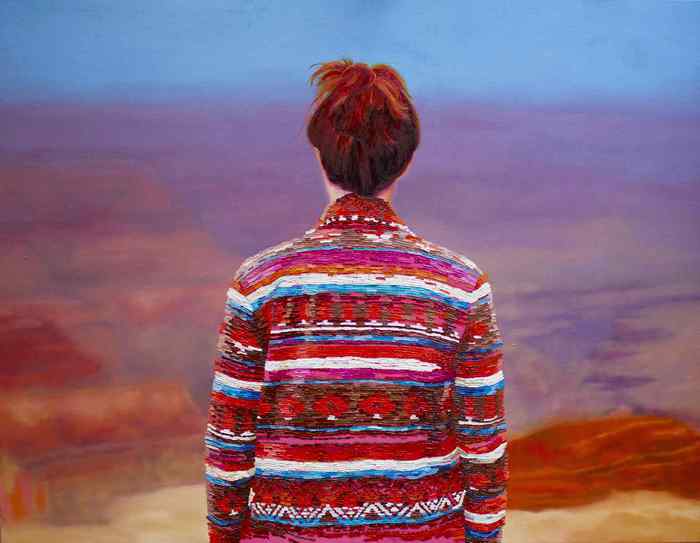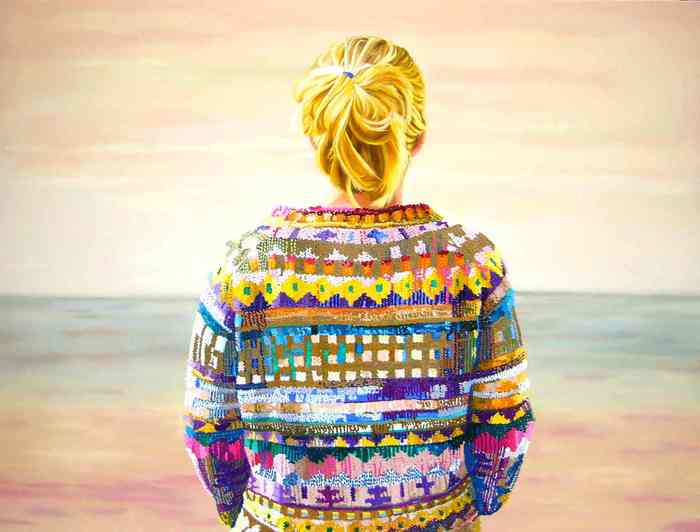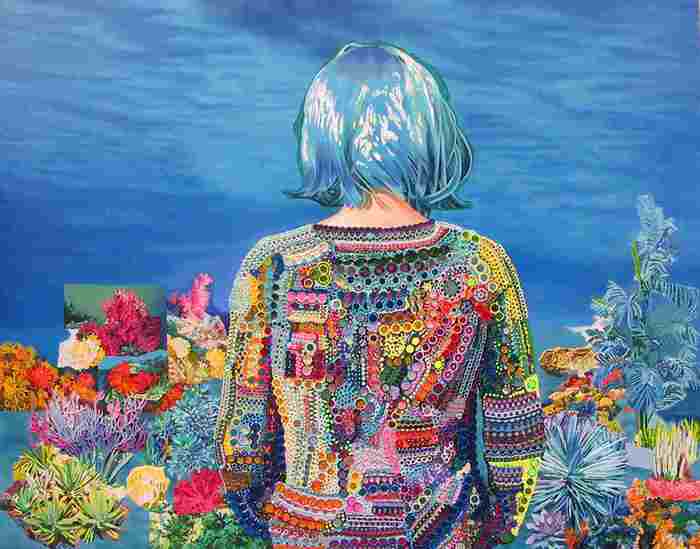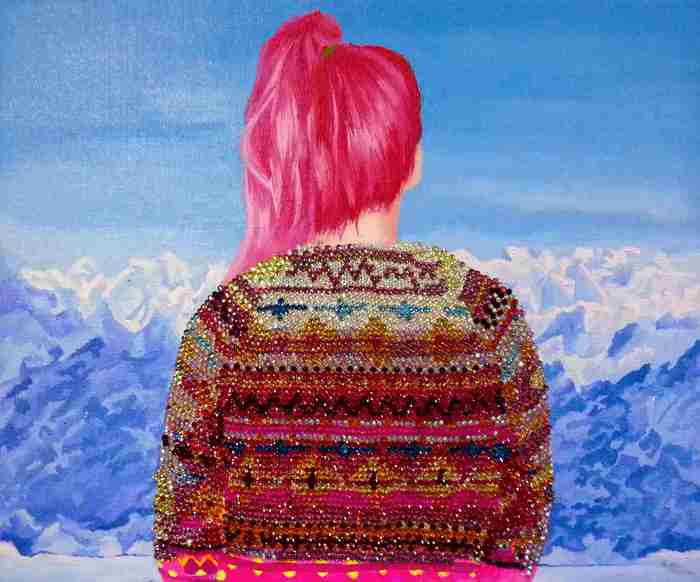The portraits by Alejandra Atarés
2015-02-12
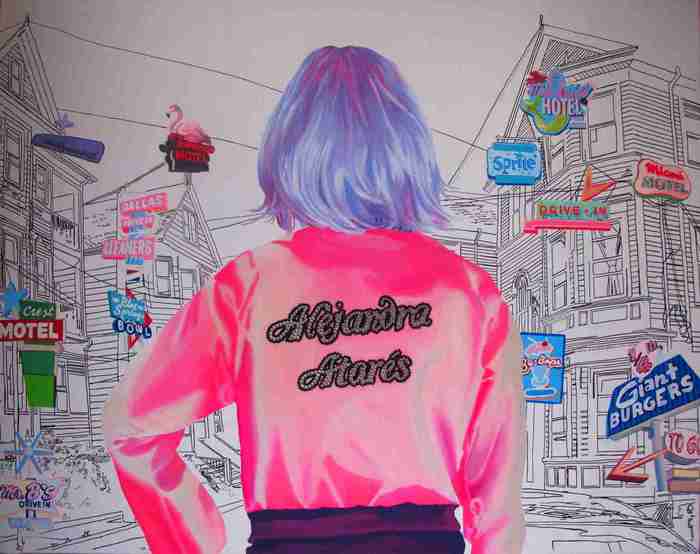
Whose backs are turned to us? Mainly women – feminine backs whose torsos denote courage in the face of uncertain horizons.
Reminiscent of heroines with powers, as if painting was the chosen medium to showcase their hypnotizing and magic qualities, the fantasy genre begins to flood Atarés’s most recent work, probing glistening fabrics, highlighting the more material aspect of the painting and its subject matter. Despite being latent in earlier paintings, the idea of escaping towards prototypically exotic countries (intentionally foregrounding their clichés) has since been flirting with the protagonism of the figure, meshing and mixing with her to form a patchwork of colors and intensity which stress the continuous search for contrast and explosion in material.
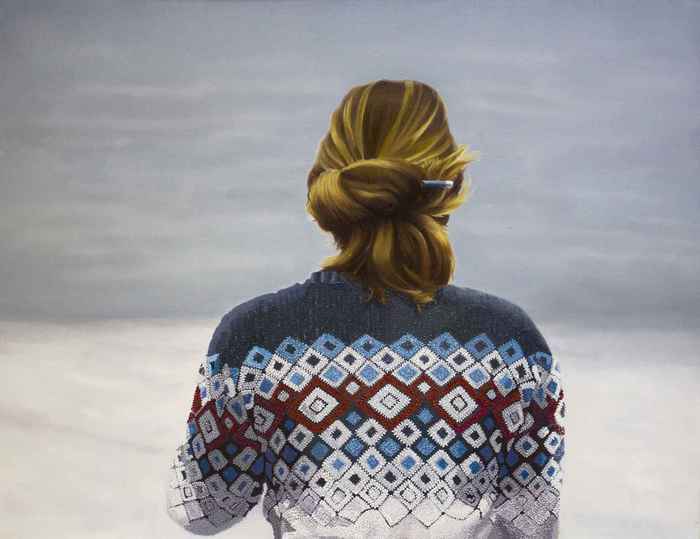
In a society where that which shines communicates questions of class, Atarés strips hierarchies of their meaning through the material, making collage into a jewel, using, in a ludic yet attentive manner, materials which span from oil to industrial plastic. In the paintings’ settings we intuit a nostalgic fascination with artists like Joaquim Mir, Anglada Camarassa (those electric marine backgrounds) or with the flaming dresses of Casas where the smallest detail becomes a treasure.
The Baroque is also present, yet at the same time, is doused in the fragrances of modern divas, like Rihanna, Katy Perry and other current pop icons. However, if we look closely, through the thick layers of paint (the miniscule embroidery), we see that before every figure a horizon can almost always be found in which there are no clear answers. Although we at times intuit doubt in the figure´s attitude, we see this uncertainty faced head on with strength and vitality.
And it is such that the work of Alejandra Atarés knows neither of shyness nor of reserve.

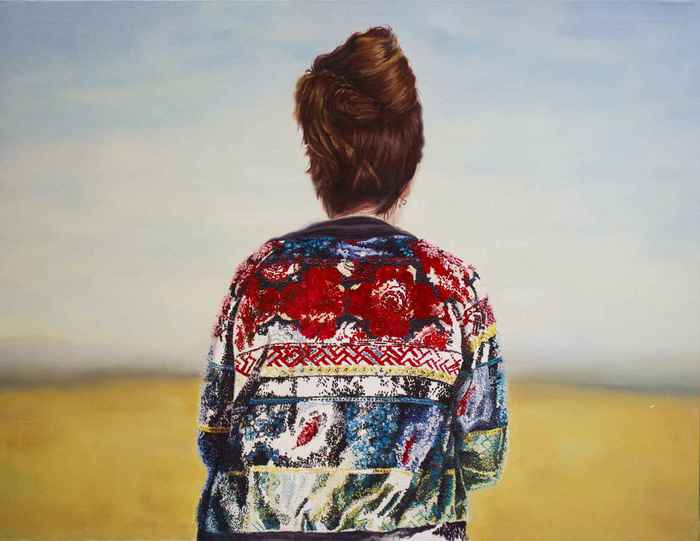
Before her “portraits” we feel active, we want to stroke, caress and get close to her figures and to be part of a dialectical game where the distances between the viewer and the piece play at interlacing. Atarés’s work boldly plays at creating a reverse: it is not the painting which turns its back on us, but on its enemies whom we have to get close to in order to see. The gaze, which will never be revealed to us, and the faces, (most certainly self-portraits of the artist herself!) where her character and disposition are hidden, are reflected in the fantastic landscapes which we, as viewers, contemplate.
